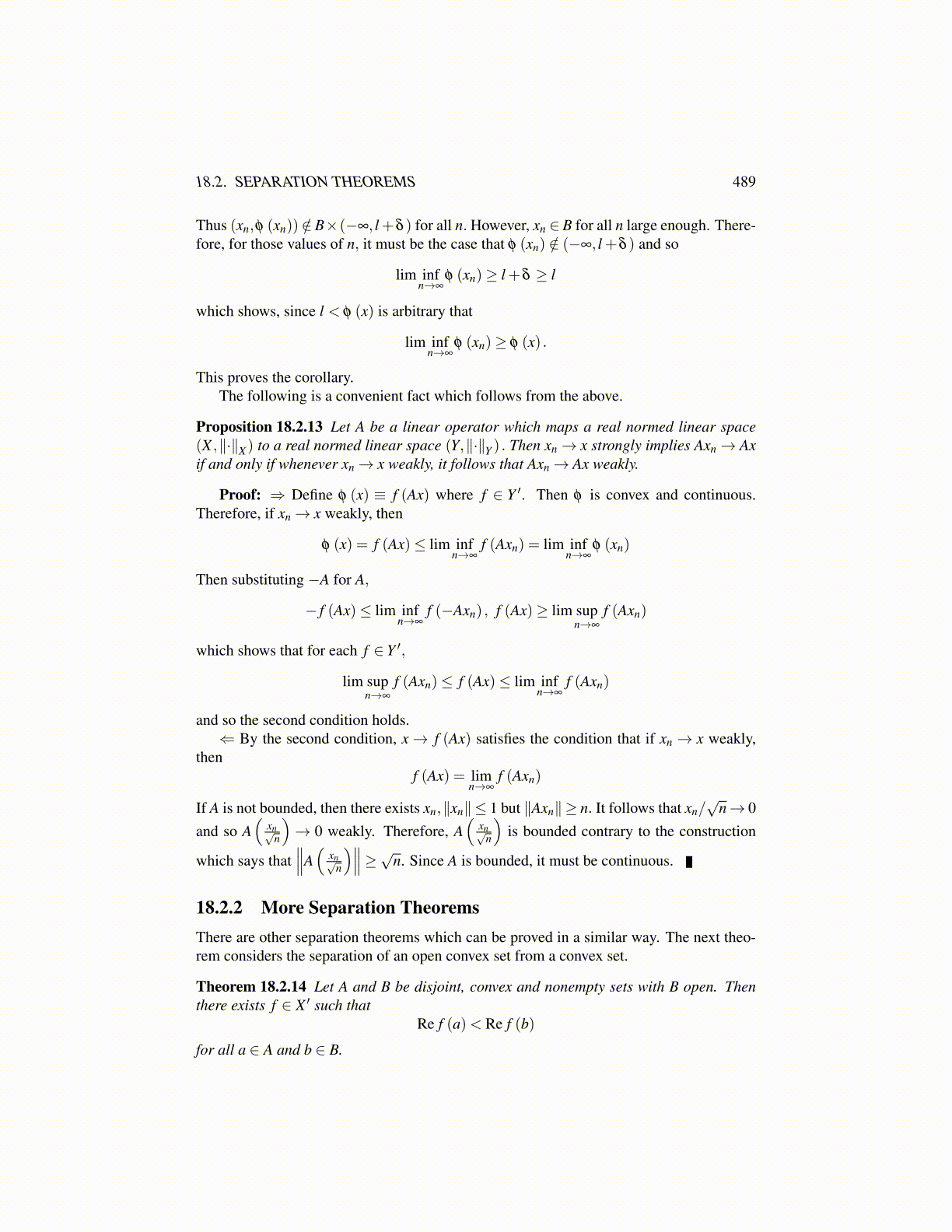
18.2. SEPARATION THEOREMS 489
Thus (xn,φ (xn)) /∈ B×(−∞, l +δ ) for all n. However, xn ∈ B for all n large enough. There-fore, for those values of n, it must be the case that φ (xn) /∈ (−∞, l +δ ) and so
lim infn→∞
φ (xn)≥ l +δ ≥ l
which shows, since l < φ (x) is arbitrary that
lim infn→∞
φ (xn)≥ φ (x) .
This proves the corollary.The following is a convenient fact which follows from the above.
Proposition 18.2.13 Let A be a linear operator which maps a real normed linear space(X ,∥·∥X ) to a real normed linear space (Y,∥·∥Y ) . Then xn→ x strongly implies Axn→ Axif and only if whenever xn→ x weakly, it follows that Axn→ Ax weakly.
Proof: ⇒ Define φ (x) ≡ f (Ax) where f ∈ Y ′. Then φ is convex and continuous.Therefore, if xn→ x weakly, then
φ (x) = f (Ax)≤ lim infn→∞
f (Axn) = lim infn→∞
φ (xn)
Then substituting −A for A,
− f (Ax)≤ lim infn→∞
f (−Axn) , f (Ax)≥ lim supn→∞
f (Axn)
which shows that for each f ∈ Y ′,
lim supn→∞
f (Axn)≤ f (Ax)≤ lim infn→∞
f (Axn)
and so the second condition holds.⇐ By the second condition, x→ f (Ax) satisfies the condition that if xn → x weakly,
thenf (Ax) = lim
n→∞f (Axn)
If A is not bounded, then there exists xn,∥xn∥ ≤ 1 but ∥Axn∥ ≥ n. It follows that xn/√
n→ 0and so A
(xn√
n
)→ 0 weakly. Therefore, A
(xn√
n
)is bounded contrary to the construction
which says that∥∥∥A(
xn√n
)∥∥∥≥√n. Since A is bounded, it must be continuous.
18.2.2 More Separation TheoremsThere are other separation theorems which can be proved in a similar way. The next theo-rem considers the separation of an open convex set from a convex set.
Theorem 18.2.14 Let A and B be disjoint, convex and nonempty sets with B open. Thenthere exists f ∈ X ′ such that
Re f (a)< Re f (b)
for all a ∈ A and b ∈ B.